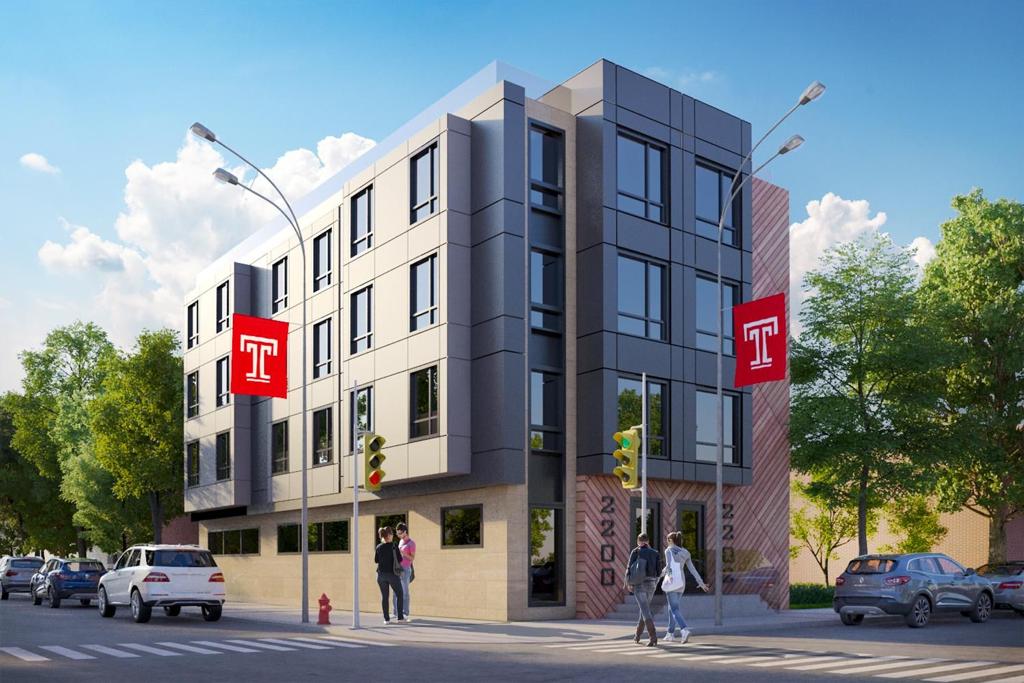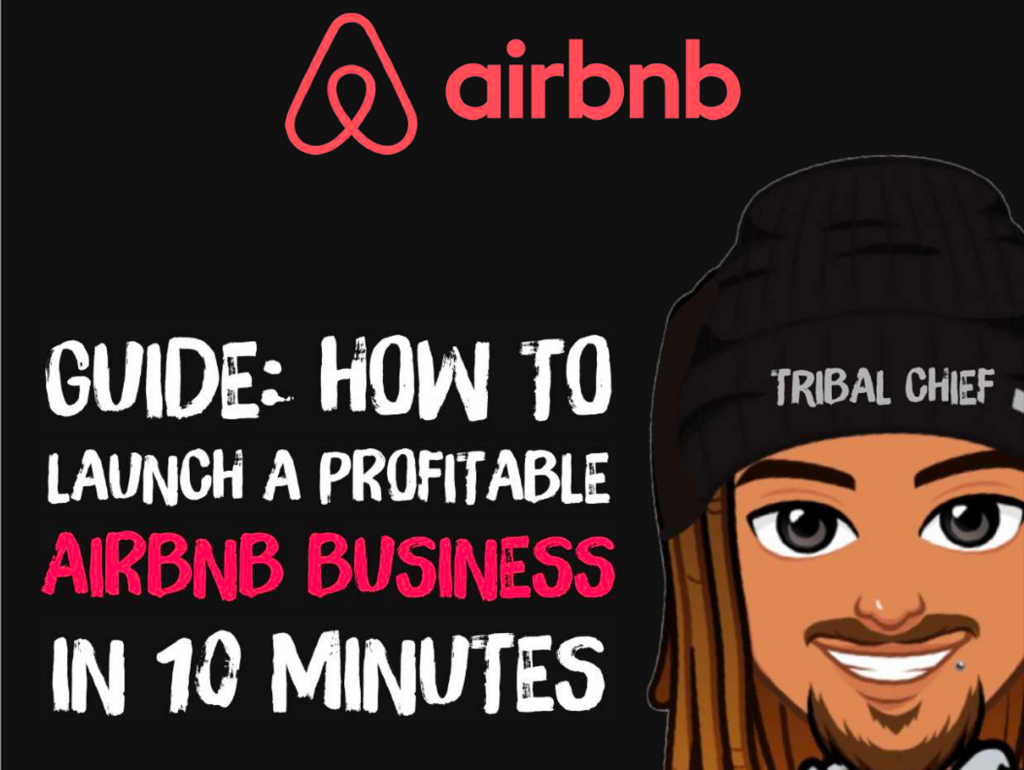Real Estate Investing
How To Make Real Estate Syndication A Success Without Using Your Money
Published
3 years agoon

Have you ever driven around your city and seen all these apartment complexes, shopping plazas, or even office buildings? I always used to think they were all owned by rich billionaires.
…some of them are, but not all.
The reality is that a lot of these large properties are actually owned by regular people like you and me to generate passive income.
But how?
Discover the real estate hacks that you should know with real estate syndication.
It’s what I used to recently close a 192 unit deal in San Antonio with my partners.
But what exactly is real estate syndication?
Syndication is a way which multiple real estate investors pool their funds together in order to purchase a property that is more expensive than any of them could have afforded on their own.
Generally, there are two types of partners in these deals: 1) General Partners (GPs) who accept additional risk, put the deal together, and operate the asset 2) Limited Partners (LPs) who have limited risk and invest more passively.
Real estate syndications are an effective way to spread risk. Since each investor can allocate a smaller sum to each deal, they can effectively spread their risk across multiple property types and diversify by geographic region.
Real Estate Syndication Structure
Syndications in real estate are amazingly diverse in their structure so it’s impossible to cover everything. In general, there are four components:
- Return of investor capital – Limited partners should always get paid back first, and this ensures they get paid first
- The preferred return – Not all deals have a preferred return, but when they do this is where it pays out. Investors get the first portion of the deal before the general partners.
- The catch-up – Many deals don’t have a catch-up tier but this is where the sponsor will get 100% of the profits after the preferred return until the predetermined split is met.
- Carried interest – profits are split based on the agreed amount (such as 80/20 or 70/30)
Let’s break it down further…

What Is A Preferred Return In A Real Estate Syndicate?
According to Mark Kenney over at ThinkMultifamily, a preferred return is “a return that investors received BEFORE the general partners receive a return.” In essence, after the investors receive their initial capital back, they received a preferred rate of return before the general partners get any payout at all.
Mark, an investor and real estate coach who owns over 2,000 doors in Tennessee, Georgia, and Texas, says that he doesn’t like to use a preferred return but has in the past on deals that didn’t expect any distributions for 12 or 18 months.
The preferred return would accrue and give incentive for people to invest in the deal.
Andrew Campbell, the co-founder of Wildhorn Capital, a multifamily operator based in Austin, Texas has a different opinion. He said he likes to have an 8% preferred return for the majority of his 450 door portfolio.
It “gives some certainty to investors about their overall returns. Plus, 8% also happens to beat the historical stock market return of 7%.”
What Is A Waterfall In A Real Estate Syndication?
The waterfall refers to the overall distribution of funds and tiers that were mentioned above, but it is often referred to as how profits are split after the preferred return is met. Andrew Campbell explains it perfectly:
“Profits generated above any preferred returns are generally split between investors (Limited Partners) and deal sponsors (General Partners). In our case, above the 8% pref we split profits 70% to Limited Partners and 30% to General Partners.
Some deals and sponsors will have additional “waterfalls” where at 18% IRR (for example) the split would go to 50/50. The general idea is that the higher the returns are to investors, the more the sponsors make, and everyone is happy.
The downside of multiple waterfalls is that sponsors can sometimes be incentivized to return investor capital early (to boost the IRR) and trigger these waterfalls.That can sometimes put unnecessary risk on the asset if they are being to aggressive.”
Kenny Wolfe, the founder of Wolfe Investments who has been involved in over $91M in real estate transactions doesn’t like the complexity of the waterfall structure many syndicators use.
“We have steered clear of preferred returns mostly because those are usually accompanied with up-front fees charged to investors. Our investment structures are tied to the performance of the investment, and not just closing deals like the typical preferred return strategy.”
He continues,
“If we make our investors money, then we’re rewarded. If we don’t then we aren’t rewarded.”
I originally didn’t plan to dive into the fee structure at all, but since Kenny brought up some great points, I think I’ll dive into the fees and how some different structures affect the incentives and performance of deals.
The Fees When Syndicating Real Estate

There are a lot of different types of fees used in syndication. Some are more common than others but all have their pros/cons. Here are the most common ones
Acquisition Fee
I’ve seen this anywhere from 0 to 5 points with 2 being the most common. Acquisition fees in a syndication are really common and most have them, but not all.
Syndicators are running a business and that has costs. Acquisition fees help pay for the operating costs, staff, flights, hotels, diligence, and other costs that are needed to run the business.
On the other hand, acquisition fees can be enormous on large deals and can drive some deal sponsors to be short-sighted and focus on closing deals rather than operating deals profitably.
Think about it, a $10M deal with 2 point acquisition fee is $200,000. That adds up fast! You can see how some sponsors will lose track of buying good deals and focus on just closing deals, regardless of how good they are.
Asset Management Fee
This generally ranges from 1-3% of gross rent revenue. This may or may not go to the deal sponsor and it goes to cover the cost of managing the asset and management team that was hired.
Construction Fee
Since the syndicator only gets paid when the asset is cash flowing, there isn’t much incentive to take on difficult projects. That’s where the construction fee comes in. If there is a major rehab project a fee can be imposed to compensate the project manager while the asset isn’t producing income.
It can vary but is often 1-2% of the construction cost.
Aligning Interests
There are a lot of competing interests in a deal and it’s difficult to align everyone 100% of the time – that’s why trust must be built with anyone that you’re investing with.
But, a few major points to consider are how all the fees and the preferred return and waterfall all fit together.
Deals with high preferred returns and high fees create incentives for the sponsor to find and close deals, but not a lot of incentive to maximize cash flow. As Andrew pointed out, deals with huge benefits to the sponsor at certain levels can cause them to sell early to bump the IRR artificially and trigger that waterfall distribution.
But, deals that compensate the sponsor more will create more incentive to produce high returns.
That’s why there are so many different ways to structure deals! Every sponsor and investor pool is different so they can create deals that work for everyone.

Structuring a Syndication Deal – Example
Similar to how Andrew structures deals, let’s say that in this deal there will be an 8% preferred return, 70/30 split thereafter, and have a 2 point acquisition fee and 2 point asset management fee.
The limited partners will get 70% of the returns after the 8% pref and the sponsor will get the other 30%. The sponsor will get 2 points up front and 2 percent of the gross revenue.
Example 2 – Syndication Structure
Kenny, on the other hand, keeps it simple. He might charge an 80/20 split with no acquisition fee, no waterfall, and no preferred return. The asset management fee is 2% as well in this example.
So, the limited partners get 80% of all the profits and the general partner gets 20%. If it does well everyone does well and if it does poorly everyone does poorly. There are very limited fees except for the asset management fee.
Example 3 – Hybrid Structure
Mark kind of does it a third way. He said he generally does the 80/20 split, but he does charge an acquisition fee and asset management fee but rarely does a preferred return.
The acquisition fee is more similar to Andrew but his split is more similar to Kenny.
It’s interesting to see how 3 different real estate syndicators have three entirely different ways to structure their deals.
How To Find Real Estate Deals to Syndicate?
These are large deals and you don’t typically see them on the MLS, so how exactly do you find deals for a syndication?
Well, three different deal sponsors had three different answers:
“Now that we’re established as a solid buyer we get off-market deals across the US. We look at the on-market deals as well. These days the off-market deals have been much more attractive.”– Kenny Wolfe
Andrew Campbell appears to have a more holistic view for finding deals.
“It’s a full-time job, and it all comes back to relationships. Meeting and networking with brokers, talking to owners, title agents, insurance providers, property managers. Leads can come from anywhere, and in this market, you want to make sure you can see as many properties as possible, and the earlier and more off-market/limited market they are the better.”
Mark Kenney has seemed to be extremely successful working directly with commercial real estate brokers.
“We generally work through brokers to finds deals.”
What About LoopNet for Commercial Real Estate Syndication?
I’ve known about LoopNet for a while, so I was curious about it. Kenney put it simply though:
“Loopnet is where deals go to die.”
But, David Eldridge of NAI Glickman Kovago & Jacobs, a commercial brokerage firm in Worcester, Massachusetts, said,
“Loopnet is far from dead. We do a ton of volume on it and use it almost exclusively for smaller listings.”
How Do You Find Commercial Brokers and Get Them to Take You Seriously?
Commercial brokers are dealing with a lot of big players in the market, and it can be difficult to get them to take you seriously if you are a new player.
Mark pointed out that “a market generally only has a few major names. The top 2 or 3 people have access to virtually all the deals, so you just need to identify them.”
He continued, “it’s not hard to get yourself onto their email list, but it can be more difficult to get people to take your offers seriously. It’s important to have some experience in the field and if you don’t, then partner up with someone who does have the experience.”
In the end, money talks and the highest offer usually wins. So, you can make up for experience with higher offers.
The Cost To Syndicate A Real Estate Deal

Now that we’ve got past the “what is a syndication in real estate” and the “how to syndicate in real estate” part of the article, we can get into the costs and money aspect.
The first logical question is about the cost of a syndication.
There are several major fixed cost items that every syndication requires, including – SEC attorney, earnest money deposit, diligence, private placement memorandum, loan application fees, and more.
So, let’s break them down. As some fees are percentage based, I’m going to create a hypothetical $2,000,000 deal.
- Attorney for Contract – $3,000
- SEC Attorney for PPM – $12,000
- EMD – 1% – $40,000
- Diligence – $25-$50 per door – $2,000
- Loan Application – 1% – $20,000
- Other Financing Costs – 0.5% – 1% – $20,000
Total Costs – $97,000 to get the deal done, of which $40,000 goes toward the purchase.
So the total fixed costs are $57,000 or 2.85% of the total deal price. As you can see, this is not cheap!
The syndicator has to front all the money and if the deal doesn’t close most of that money can be lost. So, you can see one reason why syndicators are compensated pretty well.
How Big Do Syndication Deals Need To Be?
We are talking some pretty big numbers here overall. Realistically though, how big or small does the syndication deal need to be in order for it to make sense?
Universally, all of the deal sponsors wanted to do larger rather than smaller deals. Both Mark and Kenny said they want deals over 80 units which allows for full-time on-site property management. Andrew prefers to look at it as a dollar figure and prefers to do deals over $8 million to keep the fixed costs as a small percent of the total costs.
How Do You Find Investors?
Most people reading this are probably wondering how you can find people to invest so much money. Most people can save up $50-100k, but you are talking about raising hundreds of thousands, or even millions of dollars for a deal. How?
Andrew says it’s a “second full-time job” which comes back to relationships and marketing. He does at least 5 sit-down meetings a week to grow those relationships.
Kenny is so well established that most of his new investors come from referrals though he also does a meetup, podcasts, and general outreach.
Example Syndication Deal
You might be wondering how much a syndicator can actually earn from one of these deals. So, I put together this example based on the knowledge I gained.
Let’s assume we found a property somewhere in Texas with a 6.5% capitalization rate. It’s about 70 units and is selling for $60,000 per unit. That’s $4.2M total.
A 6.5 cap rate means the property has a net operating income of about $273,000 per year before finance costs.
With about $875,000 as a down payment, that’s about $190,000/year in finance costs (I’m rounding).
So the cash flow is about $83,000/year.
Of course some of that goes toward principal, and eventually, the deal will be sold and that will get distributed back to the investors. For now, though, let’s just focus on cash flow and not the entire return.
What The General And Limited Partners Earn In A Syndication
I’m going to keep the numbers super simple so I can do it all in my head. Let’s take the 1% asset management fee out of the gross rents. We don’t have a number for gross rent (only NOI). Let’s say it’s $8,000. If you were the asset manager, great you get to pocket that. If not, someone else does.
The rental income is now $75,000.
Of that cash flow, let’s say the syndicator is doing a 90/10 split and will earn 10%.
And let’s say he also put in about $100,000 into the deal, they would have a total equity of 21.4% and would get about $16,050 in cash flow. That’s about a 16% cash on cash return for the principal (excluding the asset management fee). Don’t forget, they earn the same returns as other LPs on the cash they invest, and then get their split just for doing the deal.
Realistically, this example doesn’t include any growth in value and is a very simple example.
Now You Know The Basics
…and it’s time to download your deal calculator to help you start analyzing your next deal.
To know more about real estate hack, money tips, and building generational wealth, subscribe to Wealthlab and learn how to bust through the barriers preventing you from becoming a millionaire.
This article originally appeared on IdealREI. Follow them on Facebook, Instagram and Twitter.
You may like
Real Estate Investing
5 Recession-Proof Investments for Your Portfolio
Published
12 months agoon
May 3, 2023
By Sheryl Chapman
As we all know, the economy can be unpredictable at times. Recession is a common phenomenon that can affect the investments in your portfolio.
But don’t worry, there are some sectors that are likely to perform well—even during a recession. Here are five recession-proof investments that you can consider adding to your portfolio.
(Editor’s note***********:************ If you wanna learn how to start investing for retirement, check out the free lessons inside the academy! 📺)*
1. Consumer staples
Consumer staples are products that are essential to our daily lives, such as food, household goods, and personal care items.
These products are in constant demand, regardless of the economic climate. Companies that produce these items, such as Procter & Gamble and Coca-Cola, are considered recession-proof investments.
These companies have a stable revenue stream that can weather economic downturns.
2. Utilities
Utilities are another recession-resistant investment. People need electricity, gas, and water, regardless of the state of the economy.
Utility companies, such as Duke Energy and American Electric Power, have a steady stream of revenue and provide investors with a reliable source of income.
3. Healthcare
The healthcare industry is recession-proof because it provides essential services that people cannot do without. Companies that provide healthcare services or products, such as Johnson & Johnson and UnitedHealth Group, are likely to remain profitable during a recession.
4. Gold
Gold is a safe-haven investment that many investors turn to during times of economic uncertainty. Gold prices tend to rise during recessions because it is seen as a store of value. Investors can buy physical gold, gold ETFs, or invest in gold mining stocks.
GUIDE: 3 Ways To Invest In Gold In 3 Minutes Or Less 🔑📲
5. Treasury bonds
Treasury bonds are considered to be one of the safest investments during a recession.
These bonds are issued by the US government and are backed by the full faith and credit of the government. Treasury bonds provide a fixed income and are considered to be a low-risk investment.
In conclusion, these five investments are considered to be recession-proof because they provide essential products or services that people cannot do without.
Adding these investments to your portfolio can provide stability during times of economic uncertainty.
Real Estate Investing
5 Tips To Pricing Your Airbnb Listing For Maximum Profits
Published
12 months agoon
May 2, 2023
Airbnb has revolutionized the travel industry by providing an affordable and unique way for travelers to experience different destinations.
With over 7 million listings worldwide, it’s safe to say that Airbnb has become one of the most popular ways for travelers to find lodging.
However, as a host, one of the most challenging decisions you’ll face is determining the right price for your listing.
Pricing your Airbnb listing correctly is critical to your success as a host, as it can make or break your profitability.
Here are some tips to help you price your Airbnb listing for maximum profit:
Know Your Market
Before you set your price, it’s essential to research the market in your area. Look at other listings in your neighborhood, paying attention to the size of the property, amenities, and location. Check the availability of your competitors and the average price they charge. This information will help you determine your pricing strategy and ensure that your listing is competitive.
Consider Seasonal Demand
Seasonal demand plays a significant role in the pricing of your Airbnb listing. During peak seasons, such as holidays, festivals, and major events, you can charge higher rates. Conversely, during low seasons, you’ll need to lower your prices to attract guests. Keep track of events happening in your area and adjust your prices accordingly.
Offer Discounts
Offering discounts is an effective way to attract guests and increase your occupancy rate. Consider offering discounts for extended stays, early bookings, or last-minute reservations. You can also offer discounts to guests who leave a positive review or refer new guests to your listing.
Calculate Your Costs
To ensure that your pricing strategy is profitable, you need to calculate your costs. Take into account expenses such as cleaning fees, utilities, maintenance, and taxes. Factor in your time and effort as well. Your goal is to set a price that will cover all your costs while still allowing you to make a profit.
Be Flexible
Finally, be flexible with your pricing strategy. Test different prices and see how they affect your occupancy rate and profitability. Monitor your competition regularly and adjust your prices accordingly. Remember that the market is constantly changing, and your pricing strategy needs to adapt to stay competitive.
In conclusion, pricing your Airbnb listing for maximum profit is a crucial aspect of your success as a host. By researching your market, considering seasonal demand, offering discounts, calculating your costs, and being flexible, you can set the right price for your listing and maximize your profitability.
Happy hosting!
Real Estate Investing
3 Ways To Turn Your Room Into Money-Making Airbnb Business
Published
12 months agoon
April 28, 2023
Are you looking for a way to earn some extra cash? Have you considered turning your spare room into a money-making Airbnb business?
With just a few simple steps, you can create a cozy and welcoming space that guests will love. In this article, we’ll explore three ways to get started on your journey to becoming an Airbnb host.
Here are three steps to get started TODAY.☕️🏠💰
1. Prepare Your Space: Before you start accepting guests, you need to make sure your space is guest-ready. This means cleaning thoroughly, providing fresh linens and towels, and decluttering the space.
PRO TIP: You may also want to consider adding personal touches like fresh flowers or a welcome basket to make guests feel at home.
Here’s a growth hack from the Airbnb lecture inside the academy: “A nice personal touch like a letter or a note can go a LONG way.”
Oh, by the way…he makes $500K/month from his Airbnb side hustle. (Watch it for free here.)
2. Create Your Listing: Once your space is ready, it’s time to create your Airbnb listing. (Here’s a guide on how to do this in 10 minutes. AND it pays you $25.)
This is where you’ll showcase your space and attract potential guests. Make sure to include high-quality photos, a detailed description of your space and amenities, and accurate pricing information.
You may also want to consider offering discounts for longer stays or adding extra perks like free breakfast or use of a pool.
3. Manage Your Guests: Once your listing is live, you’ll start receiving inquiries and bookings. It’s important to communicate promptly and clearly with guests to ensure a positive experience for everyone.
Make sure to answer any questions they may have and provide detailed check-in instructions.
During their stay, make sure to be available to address any issues that may arise and provide recommendations for local attractions and restaurants.
With these steps, you can turn your spare room into a profitable Airbnb listing and start earning extra income. Happy hosting!
Editor’s Note: If you want a step-by-step coaching session on how to set up your own $100K+ Airbnb side hustle, you can do so here. $49. Limited time only.
Top 5 Best Investment Strategies To Survive A Recession
The Top 10 Investment Opportunities To Capitalize On During A Recession
3 Gold Mining Stocks To Buy Today 📲
Ad 1
Trending

You’ve reached your free article limit.
Continue reading by subscribing.
Already a subsciber? Login >
Go back to Homepage >





You must be logged in to post a comment Login